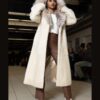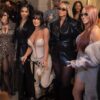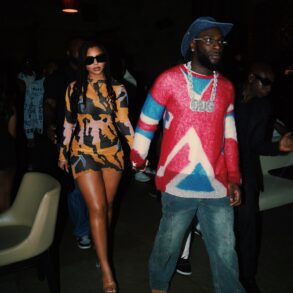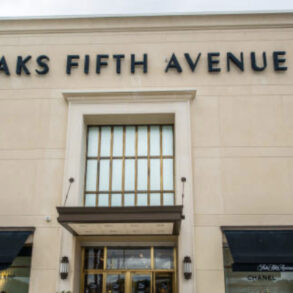An artwork made of do-rags. A photo of dozens of St. Louisans who are active in the hip-hop scene. Chance the Rapper’s hat.
Hip-hop manifests itself in U.S. popular culture in innumerable ways. An exhibition now open at St. Louis Art Museum takes an expansive view of that influence, with visual art, video installations, high-fashion wearables and a custom soundtrack.
“The Culture: Hip Hop & Contemporary Art in the 21st Century” is a collaboration with Baltimore Museum of Art, which displayed the show earlier this year. It’ll be on view on Art Hill through Jan. 1.
About a third of the pieces in the show are by artists from St. Louis or Baltimore, but the exhibition has a global view.
It’s not the first major museum exhibition on hip-hop culture, but it stands to be influential in Baltimore, St. Louis and beyond — it later travels to Cincinnati, Ottawa and Frankfurt. And it makes St. Louis a destination to learn about hip-hop on its 50th birthday.
“This is so much bigger than us. It’s bigger than a curatorial team. It’s bigger than St. Louis Art Museum and the Baltimore Museum of Art. This is a moment in time. This is a moment in history,” said Andréa Purnell, one of two SLAM curators who worked with a pair of curators from Baltimore to put the show together. She is one of two African-American women among the foursome.
Hannah Klemm, the SLAM curator who teamed with Purnell, has since moved on to the Blanton Museum of Art in Austin, Texas.
Tristen Rouse
/
St. Louis Public Radio
A wide variety
“The Culture” features a wide variety of artistic forms. St. Louis artist Aaron Fowler created a sculpture in the shape of a giant pair of Nike sneakers from automobile parts. Kahlil Robert Irving, an artist who has also lived and worked in St. Louis, authored an abstract sculpture; it sits on a pedestal wrapped with a digital collage showing bits of newspaper articles and a glimpse of the Gateway Arch. Anthony Olubunmi Akinbola, a native of Columbia, Missouri, is represented by a work comprised of do-rags that he flattened and attached to canvas.
The works are often beautiful, but densely layered with meaning.
The outsized scale of Fowler’s sculpture suggests the importance Nelly famously attached to the shoe style. Akinbolo’s work is almost defiantly beautiful, creating textures and rhythms akin to the brushstrokes of an Abstract Impressionist painter by using an everyday clothing item that is banned, on specious grounds, from many white-dominated spaces.
Tristen Rouse
/
St. Louis Public Radio
Irving’s sculpture references the former St. Louis police officer who a jury acquitted of murder after he shot Anthony Lamar Smith to death in 2011, and draws connections between racist violence of the past and of today.
“The Culture” also highlights hip-hop culture’s influence on branding, advertising and fashion.
“We were really trying to showcase the incredibly important and interesting and complex ways in which hip-hop as a broad cultural phenomenon has really become ensconced in contemporary society, in ways that many of us don’t even think about,” said Klemm. “That’s really important for me, as somebody who maybe didn’t come into it as a hip-hop connoisseur, to showcase how powerful hip-hop culture has been and how transformative it’s been.”
Tristen Rouse
/
St. Louis Public Radio
Looking outside the usual circles
St. Louis Art Museum hired Min Jung Kim as its first permanent leader of color in 2021. But the museum has historically been a predominantly white institution; in 2020, its board reported that 85% of its 56 supervisory roles were filled by white employees.
To ensure that the team had the cultural competence to create an exhibition on hip-hop, the curators also enlisted a 20-person advisory group of hip-hop artists, scholars and other experts.
“As art museums, we did not presume that we have all of the knowledge we needed to produce an exhibition on hip-hop,” Kim said last month at a press preview of the show.
SLAM leaders also looked outside their usual curatorial circles to bring Purnell onto the project. An accomplished actress and public relations professional with a master’s degree in fine arts management, Purnell serves as the museum’s manager of audience development — not a position whose responsibilities typically include exhibition curation.
Her theater background proved important as curators arranged the placement of objects in the exhibition with rhythms meant to mimic the rising and falling action of a movie or a play. At a key juncture, the celebratory mood found earlier shifts with a series of pieces that consider gun violence.
Tristen Rouse
/
St. Louis Public Radio
The black walls of the exhibition also mark a conspicuous change from other SLAM shows. One gallery, in which visitors are encouraged to linger and reflect, is painted white.
“We are intentionally transforming not only your physical space, but even your mental space by having you walk this journey of hip-hop culture along beautiful, stunning, black walls,” Purnell said. “The skills from a performing arts background can be transferred into the visual art space keenly — the lighting, the hanging of the works and which pieces are in conversation with each other.”
The exhibition closes with a mural-sized photograph by Adrian Octavius Walker that alludes to two historic group photos — ”A great day in hip hop,” taken by Gordon Parks in 1998, and its inspiration, “A great day in Harlem,” taken in 1948 by Art Kane.
Kane’s photo shows 57 legends of jazz gathered together. Parks’ work emulates the original, with a group of 177 hip-hop artists.
Walker photographed a group of 116 hip-hop professionals from St. Louis, gathered on a sunny day on Art Hill. It is a joyful image with powerful undertones.
“They are facing the art museum. So it’s like a push back to power,” Purnell said. “Who decides what is art? Clearly, in this beautiful example that we see here, art is on full display. What a prideful moment for our community.”
Correction: An earlier version of this story misspelled the name of St. Louis Art Museum Director Min Jung Kim.
Copyright 2023 St. Louis Public Radio. To see more, visit St. Louis Public Radio. 9(MDAxODQ2NTcwMDEyMTczNTUzNDMzODFkZQ004))
9(MDAxODQ2NTcwMDEyMTczNTUzNDMzODFkZQ004))
This post was originally published on this site be sure to check out more of their content.








